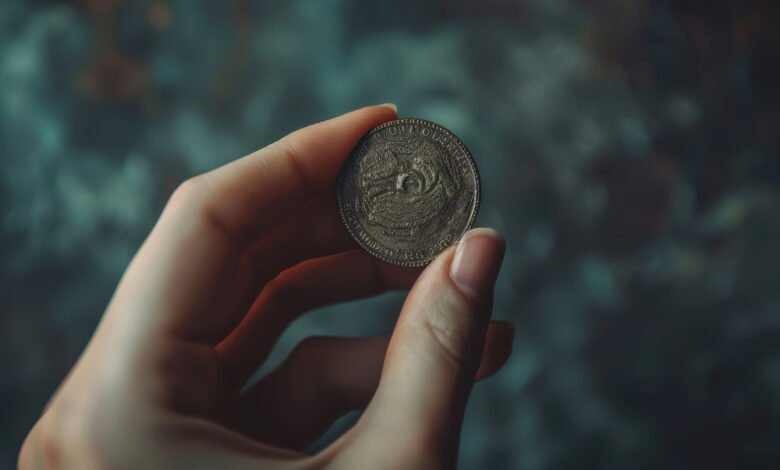Ek Rupee Coin Ka Manufacturing Cost Kitna Hoga? A Detailed Breakdown

Coins, especially the ek rupee coin, are a crucial part of a country’s currency system. They are used by millions of people every day, yet most of us don’t really consider the behind-the-scenes processes that go into making them. One question that often arises is, “ek rupee coin ka manufacturing cost kitna hoga?” or “What is the cost of manufacturing a one rupee coin?”
In this article, we will explore the factors that contribute to the cost of manufacturing the ek rupee coin, including materials, production processes, and other economic factors. Additionally, we will discuss why the manufacturing cost may vary, and how it impacts the overall economy.
Understanding the Components of a Coin’s Manufacturing Cost
Before delving into the specifics of the ek rupee coin ka manufacturing cost kitna hoga, it’s essential to understand the factors that contribute to the overall cost of coin production.
1. Material Costs
The material used in the ek rupee coin plays a significant role in determining its manufacturing cost. Coins are usually made from metal alloys, and the type of metal can vary.
- Current Composition of the Ek Rupee Coin: The ek rupee coin is typically made of a combination of metals like steel, copper, zinc, and nickel. This alloy is durable and resistant to wear and tear, which is essential for circulating currency.
2. Minting Process
The process of minting a coin involves several steps, including:
- Die Cutting: Creating the dies for the coin.
- Coin Blanking: Cutting circular blanks out of metal sheets.
- Coin Striking: Pressing the blanks to imprint them with the design.
Each of these steps incurs a certain amount of cost, particularly the die cutting and coin striking processes, which require specialized machinery and skilled labor.
3. Labor Costs
Labor costs are a significant part of any manufacturing process, and coin production is no different. Skilled workers and technicians are needed at every stage of the process, from designing the coins to operating the minting machinery.
4. Infrastructure and Maintenance Costs
Maintaining the minting facility, machinery, and tools incurs significant costs. The infrastructure costs also include the setup of quality control processes and the overall maintenance of equipment.
Cost Breakdown of Ek Rupee Coin Manufacturing
To give you a better idea of how the ek rupee coin ka manufacturing cost kitna hoga, here is a breakdown of the costs involved in the production process:
| Cost Factor | Description | Estimated Cost (Per Coin) |
|---|---|---|
| Material Costs | Alloy of steel, copper, zinc, and nickel used for the coin. | ₹1.00 – ₹1.20 |
| Die Cutting and Minting | Cost of designing and creating dies and minting coins. | ₹0.50 – ₹0.70 |
| Labor Costs | Wages of skilled workers and technicians. | ₹0.30 – ₹0.50 |
| Infrastructure & Maintenance | Maintaining machinery and facilities. | ₹0.10 – ₹0.20 |
| Distribution and Logistics | Cost of transporting the minted coins. | ₹0.05 – ₹0.10 |
The total cost to produce a single ek rupee coin can therefore be estimated to range between ₹1.95 and ₹2.70, depending on the various factors such as metal prices, labor costs, and operational expenses.

Factors Affecting the Manufacturing Cost of Ek Rupee Coin
Several factors can influence the cost of manufacturing ek rupee coins, making it difficult to determine a fixed price for coin production.
1. Fluctuating Metal Prices
The prices of metals like copper, zinc, and nickel, which are used to make the coin, are highly volatile. Any significant changes in metal prices can impact the overall manufacturing cost.
2. Technological Advancements
As minting technology improves, the cost of producing coins may decrease. New machinery and more efficient processes can result in higher productivity and lower per-coin costs.
3. Inflation and Economic Conditions
The overall economic climate, including inflation and currency devaluation, also affects the manufacturing costs. If the price of energy, labor, or materials rises due to inflation, the cost of manufacturing the coin will increase accordingly.
4. Demand and Volume of Production
The demand for coins plays a role in how efficiently they are produced. When large quantities of coins are minted at once, the cost per coin decreases due to economies of scale. However, when minting is done on a smaller scale, the per-coin cost tends to be higher.
Frequently Asked Questions (FAQs)
Q1: What is the current composition of the ek rupee coin?
The ek rupee coin is made from an alloy consisting mainly of steel, copper, zinc, and nickel. The exact composition varies slightly depending on minting processes and metal availability.
Q2: Why does the cost of manufacturing coins change?
The manufacturing cost fluctuates based on factors like metal prices, labor costs, inflation, demand for coins, and technological advancements in the minting process.
Q3: Why do some coins cost more to manufacture than others?
Coins with more complex designs, use of precious metals, or larger sizes tend to have higher manufacturing costs. For example, coins made from gold or silver are more expensive to produce than base-metal coins like the ek rupee coin.
Q4: How do fluctuations in metal prices impact the economy?
Fluctuations in metal prices can increase the cost of manufacturing, which could potentially lead to inflation if the government increases the value of currency or prints more money to compensate for higher costs.
Q5: How much does the Indian government spend on manufacturing coins annually?
The total annual expenditure for coin production depends on the number of coins minted each year and the overall demand for currency in circulation. This cost is typically calculated by the Reserve Bank of India (RBI), which monitors currency and coin production.
Main Points to Remember:
- The ek rupee coin ka manufacturing cost kitna hoga is estimated to range between ₹1.95 and ₹2.70 per coin.
- Major cost components include material, minting, labor, and infrastructure maintenance.
- Fluctuating metal prices, economic conditions, and technological advancements can all influence the cost.
- Economies of scale can reduce the per-coin manufacturing cost when large volumes are produced.
Conclusion: The Economics Behind Coin Production
The ek rupee coin ka manufacturing cost kitna hoga is an essential question that highlights the economic considerations behind currency production. While the cost may seem small, the factors that contribute to it are influenced by a complex mix of materials, labor, technology, and economic conditions.
Understanding these aspects gives us insight into the broader economic mechanisms at play. The Indian government’s careful management of these costs helps ensure that the country’s currency remains functional, reliable, and affordable.





